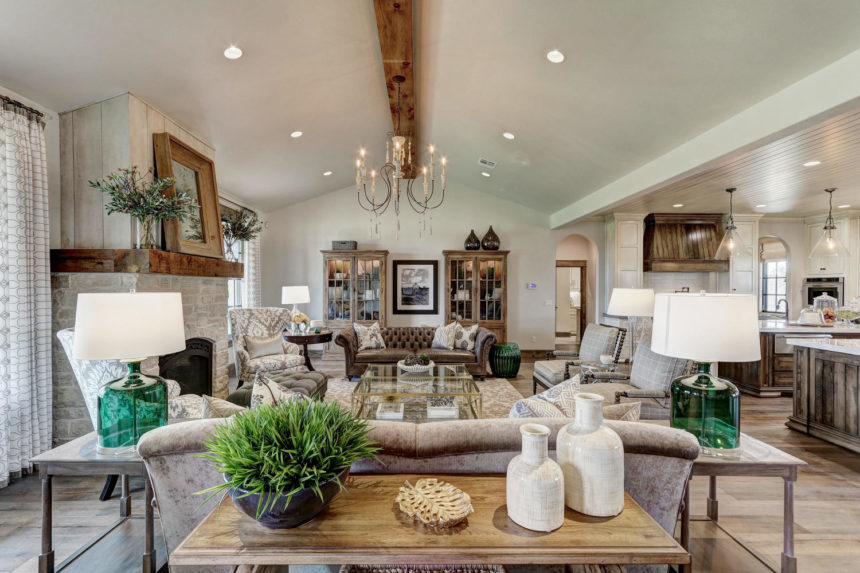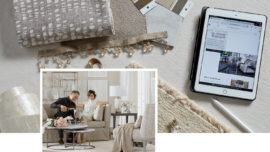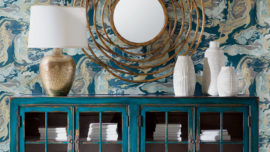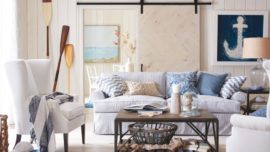There’s a science to symmetry, and a host of reasons why we humans like it so much. It’s a design principle that has guided artists and architects for millennia. Symmetry is what happens when the elements on both sides of an axis are the same. It’s restful. It creates balance. And balance creates harmony. Too much symmetry can feel forced or fussy, but when it’s done well, it’s both visually agreeable and subliminally soothing.
Alicia Zupan knows this instinctively, which is why she does symmetry better than most. And that’s one of the reasons Alicia, a member of the Ethan Allen design team in Oklahoma City since 2012, is our latest Design Star.
For many designers like Alicia, symmetry is a go-to tool that never disappoints. “Symmetry is found in nature through reflection, repetition, and rotation,” explains Alicia. “and I use all three in many of my projects.” But while symmetry creates balance, it’s not the only path to harmony. “I also use asymmetrical pieces to create balance,” she says, “but they must be chosen well. It’s important they are of same scale or visual weight to create a feeling of equilibrium.”
This is how Alicia does it:
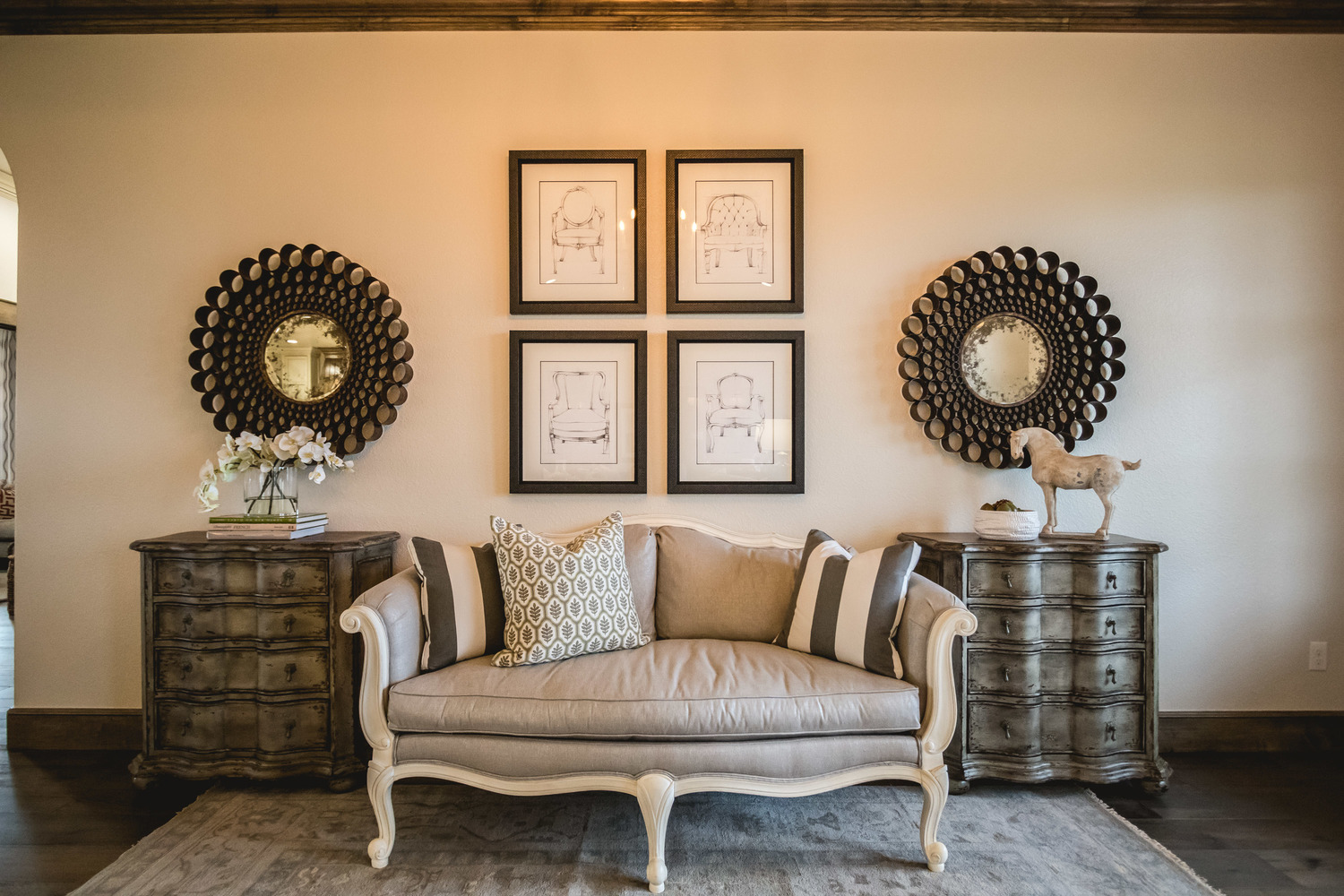
AZ: “This entry wall was large, open to the living and dining rooms, so it needed a statement that said, ‘Welcome, come have a seat!’ To create that, I used mirroring Lucca chests and aged bronze industrial mirrors on either side of the Evette settee, the focal point of the space. The repetitive use of artwork above the settee is called translational symmetry. To add interest and break up the uniformity, I added asymmetry in the form of tabletop accents and a patterned pillow.”
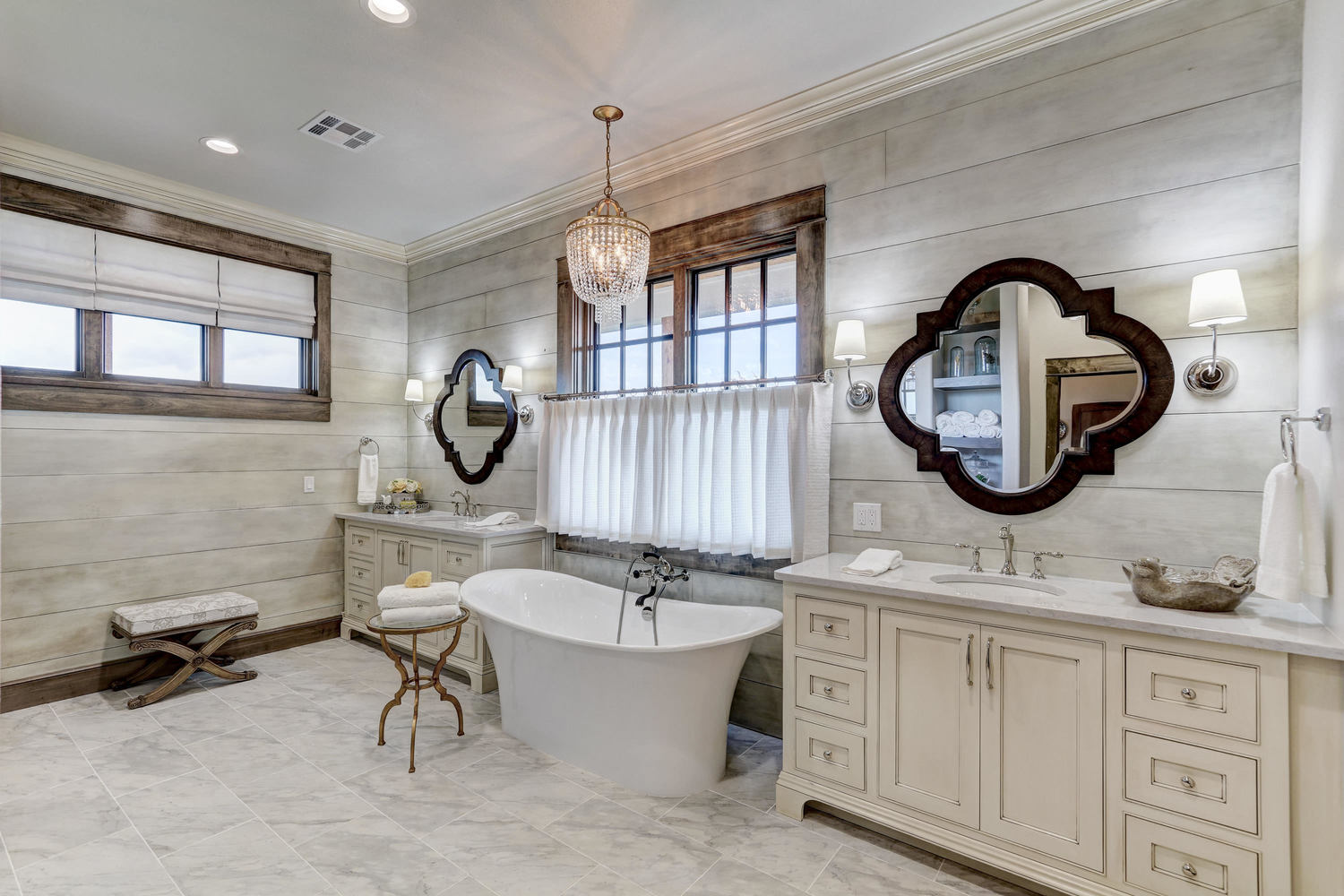
AZ: “This is one of my favorite bathrooms. There’s lots of symmetry here. We wanted the freestanding bathtub to be the focal point of the room. The two Quatrefoil mirrors over the matching vanities established support and structure for the focal point. Custom sheers and the Alexa chandelier created an element of romance; a small bench and Belle table deliver function and interest.”
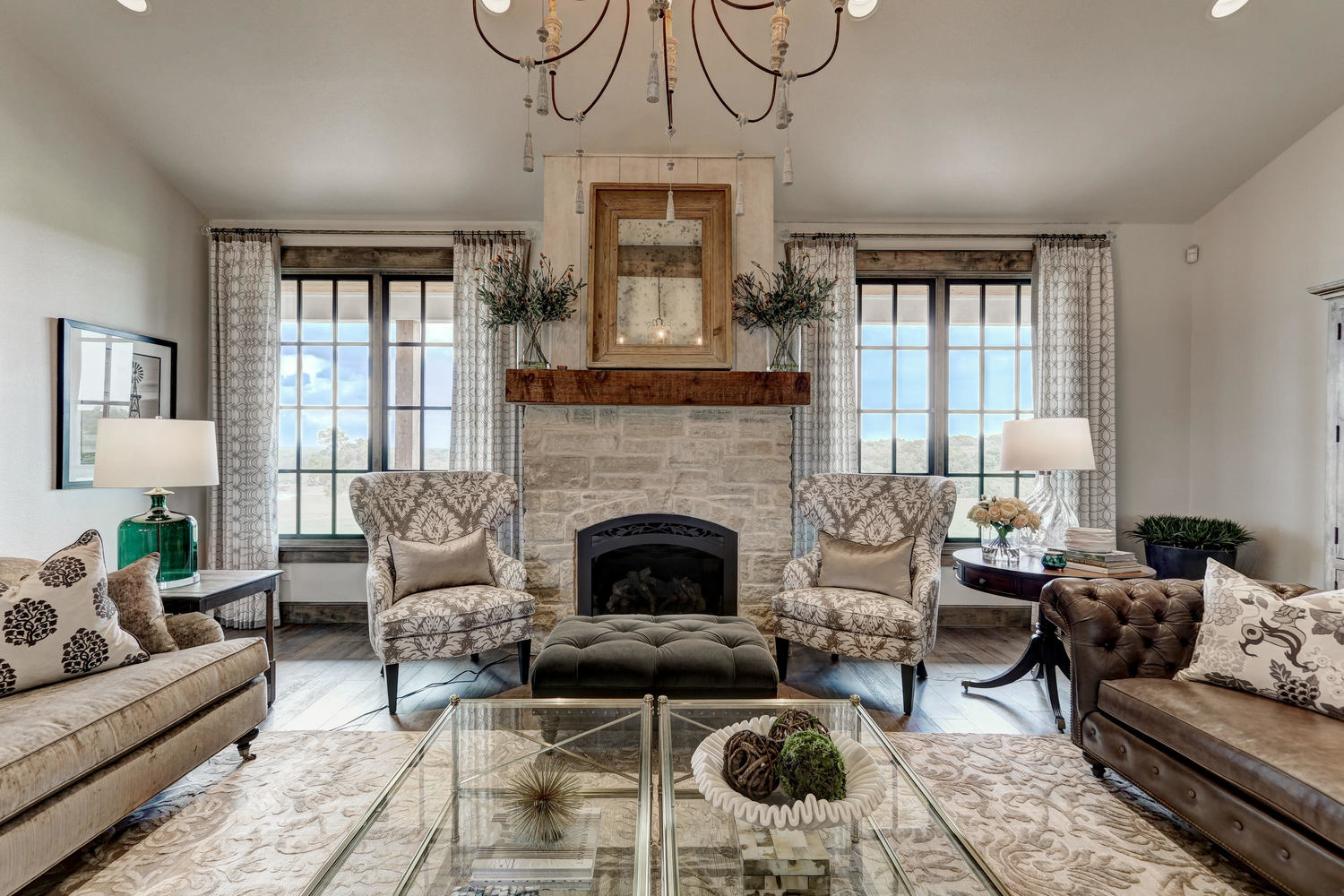
AZ: “Two matching Rand chairs flanking the fireplace and twin Jocelyn coffee tables create powerful symmetry in this room. The Mansfield and Oxford sofas are similar in scale, so they add balance. The use of different fabrics and accents brings in asymmetrical notes.”
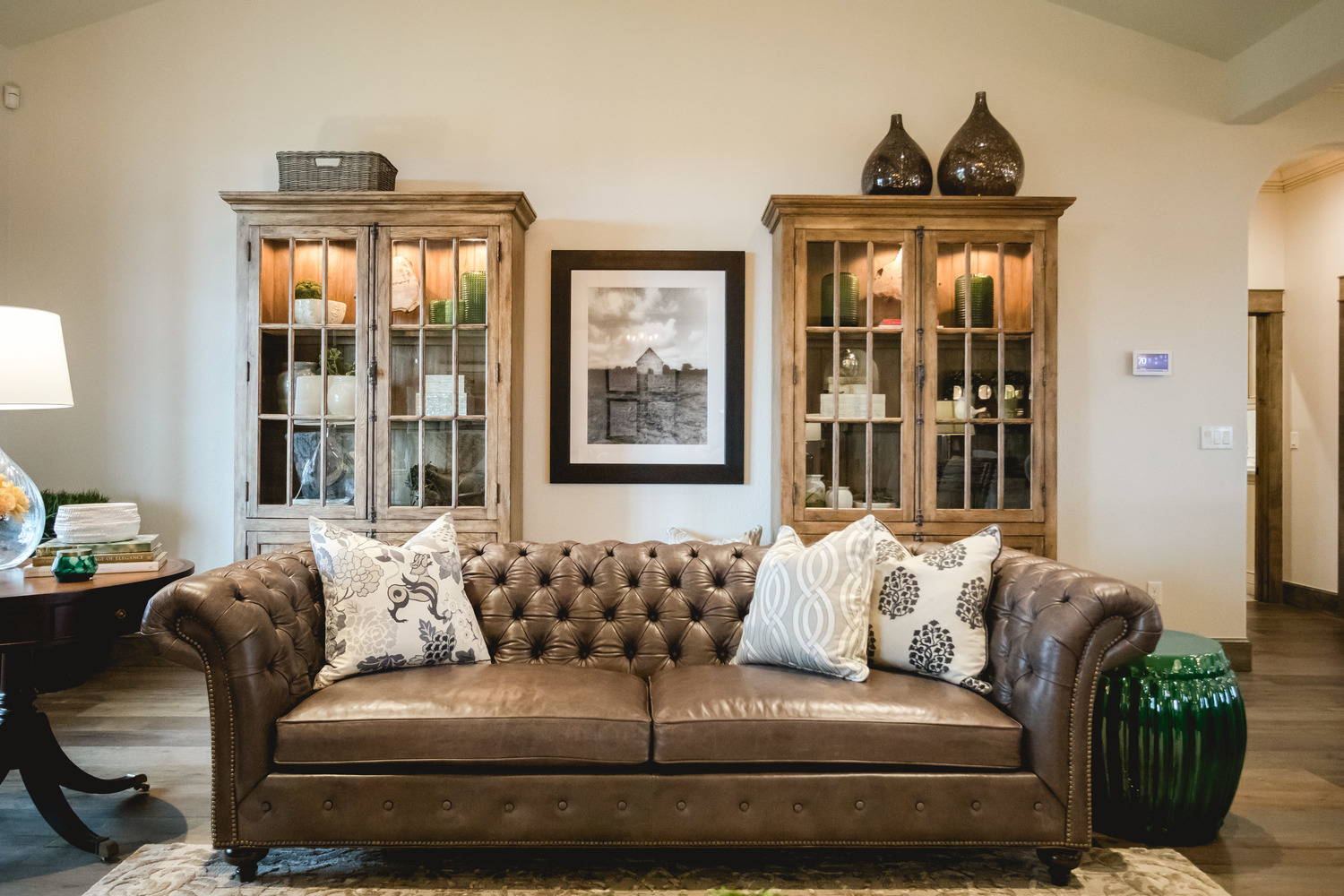
AZ: “The statement-making cabinets behind the Mansfield sofa anchor this space with pure symmetry. I balanced out the visual weight of the Bradford Rent table and clear glass lamp with the Emerald drum table on the other side of the sofa. The simple basket and Aubergine Plum vases are very different, but nevertheless add equilibrium.”
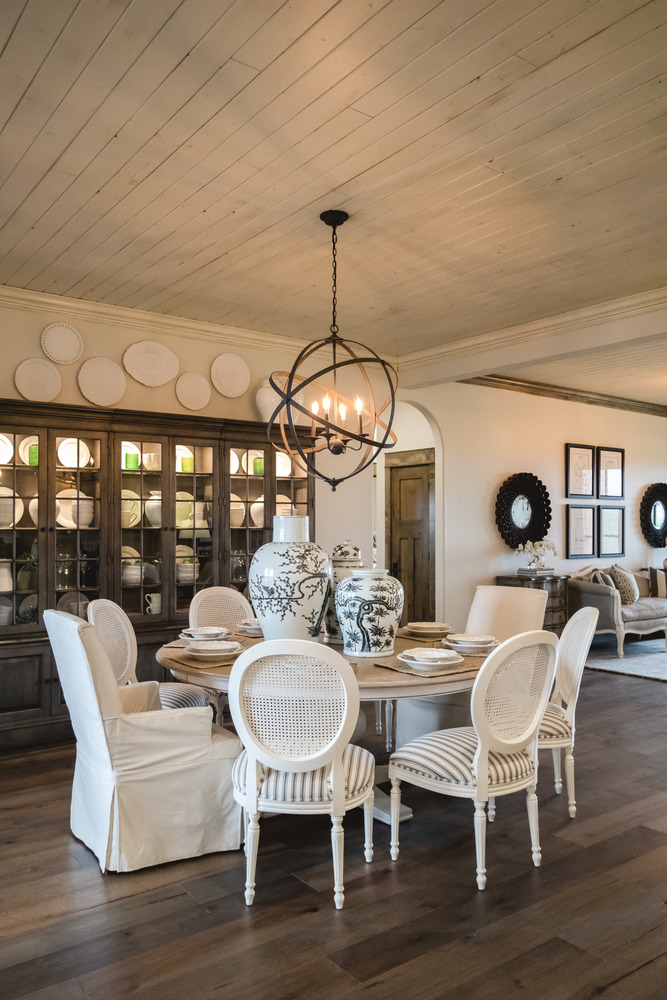
AZ: “Here I used ‘radial symmetry’ in the way I positioned the Chrystiane and Dayton chairs around the Cooper table, which is the central axis in the room, along with the Navesink chandelier overhead.”
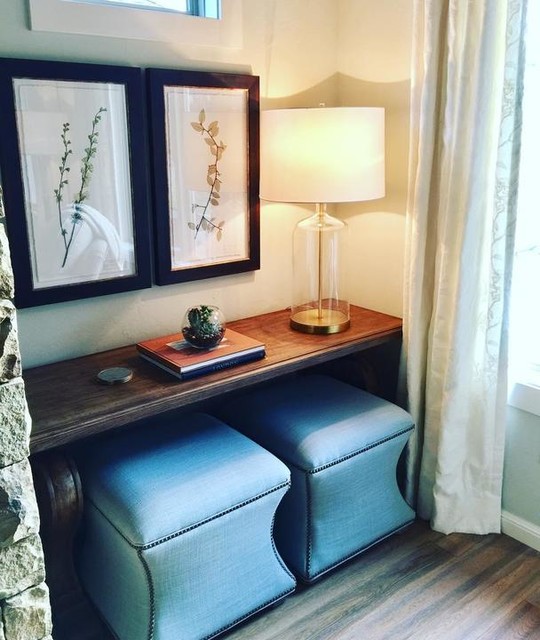
AZ: “I love using pairs to create symmetry in a vignette. Here I hung a pair of pressed botanicals over the Wayfarer console and tucked a pair of Corbin ottomans underneath.”
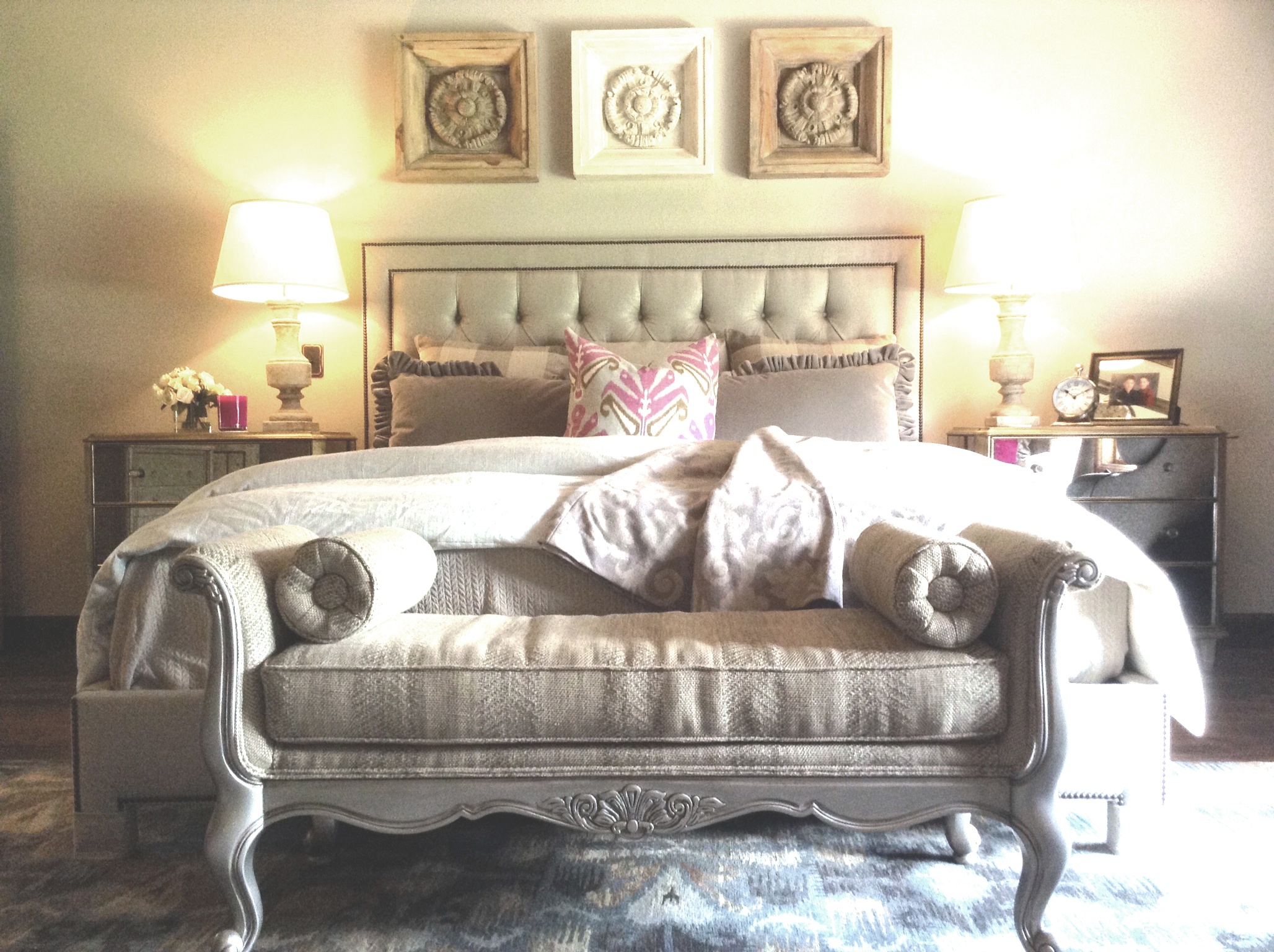
AZ: “Two Vivica chests and matching lamps on each side of the Jensen bed create balance and serenity. The graceful Belfiore bench softens the lines of the headboard and repeats the rosette motif of the artwork above the bed.”

